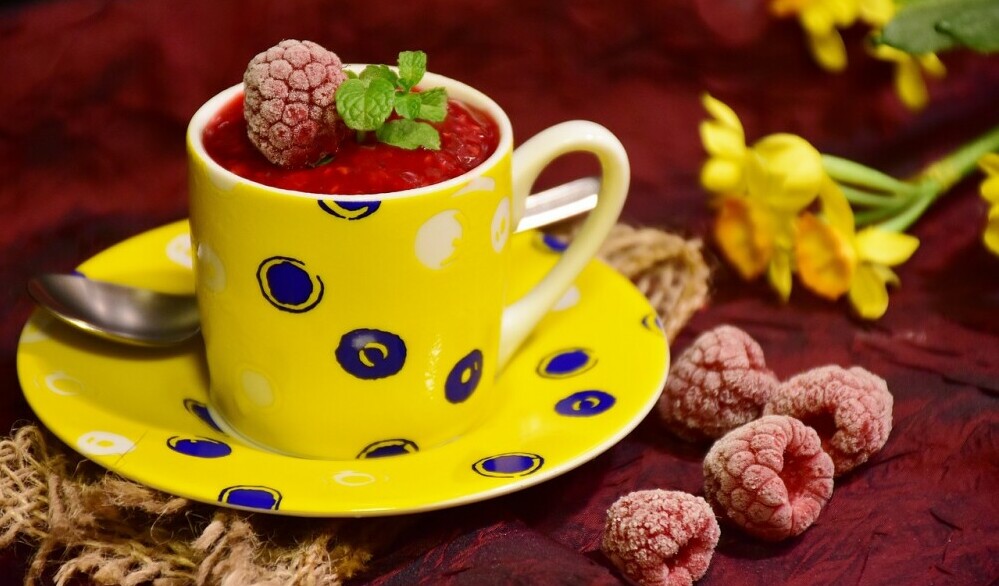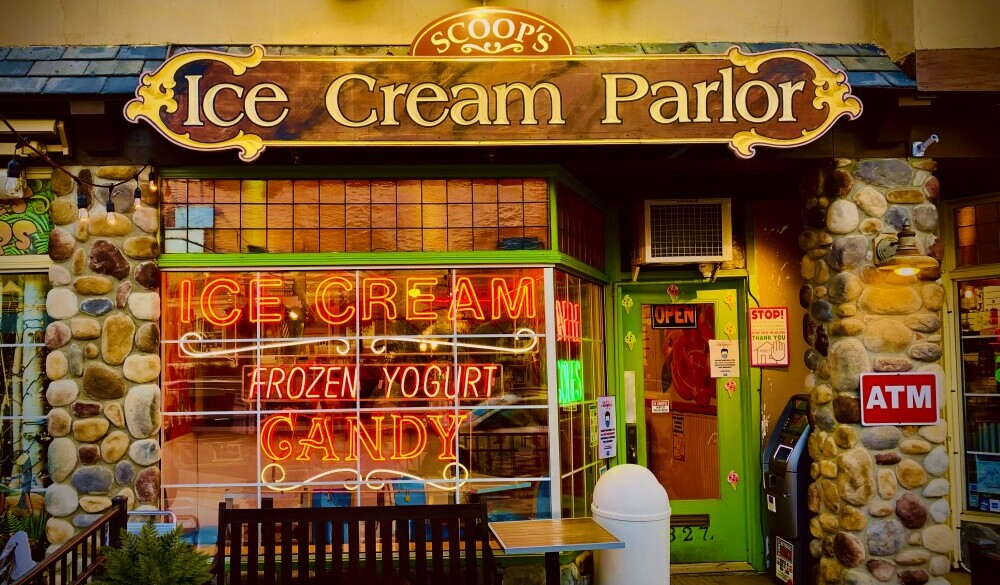Disclaimer: The information provided in this article is for general informational purposes only. It is not intended as professional advice or a substitute for consultation with a qualified nutritionist, dietitian, or medical professional. Always consult your healthcare provider before making any dietary changes or consuming specific foods, especially if you have allergies, medical conditions, or dietary restrictions. Always make informed choices based on your personal health circumstances.
I find ice cream is not just a sweet treat; it’s a dessert with a rich historical tapestry that deserves recognition. Ice cream has an essence that brings out the best in us.
Why do people love ice cream?
What’s not to love about ice cream? This creamy, sweet frozen dessert is enjoyed by people across different ages and backgrounds for good reason. Here are some of the main reasons ice cream is such a popular treat:
✔️ The number one driver has to be the delightful taste. With options spanning from vanilla to chocolate and strawberry to cookie dough and more, there’s a flavor for every preference. I can’t resist the rich, smooth sweetness of a good ice cream.
✔️ Ice cream is also generally pretty affordable, especially compared to other desserts. Whether you grab a pint at the grocery store or stop by your local creamery, enjoying this tasty treat won’t break the bank.
✔️ The convenience factor also makes ice cream a go-to choice for many people, including myself. It’s ready to eat in just a few minutes with no baking or prep work required.
✔️ Ice cream is also closely linked to celebrations and special memories with family and friends. It just feels festive and fun.
✔️ When you’re feeling down, ice cream can provide a comforting pick-me-up too. It’s hard not to feel a little better after a few spoonfuls.

✔️ Finally, with so many diverse ice cream varieties to choose from, there’s an endless array of new and exciting flavors to try if you’re adventurous. The possibilities are endless!
To appreciate today’s diverse flavors and styles, I look back at its origins and cultural journey. Ice cream’s ancestry traces back to ancient times. I learned that as early as the 4th century B.C., people enjoyed frozen desserts. In Persia, royalty relished chilled treats made with snow, fruit, and saffron. This evolved as trade and explorations introduced new ingredients and techniques around the globe.
By the 16th century, Mughal emperors were known to transport ice from the Himalayas to create a summer delicacy. The addition of dairy emerged in Europe during the Middle Ages, and ice cream as I know it began to take shape.
It was the Mughal Empire of India and Bengal that revolutionized a new prototype – what we now know as “kulfi.”
By transporting ice across miles from the towering Hindu Kush mountains, Mughal royalty had the key ingredient to craft the richest frozen treats. The ice-hauling caravans led directly to the empire’s kitchens, where the dessert was molded into cones and cups to delight the palates of emperors and nobles.
One of our Founding Fathers, George Washington, was known to have invested a lot of money in buying ice cream. Historical documents show that George Washington was an avid ice cream enthusiast during his presidency. As early as May 1784 while serving as Commander in Chief of the Continental Army, records indicate Washington purchased an “Ice Cream Machine” for chilling and preparing this tasty treat.

Later, in 1790 during his first year as President, a New York merchant’s ledger revealed Washington spent $200 on ice cream throughout that summer. This expenditure amounts to nearly $6,300 when adjusted for inflation in today’s money according to the Official Data Foundation’s analysis.
Throughout his two terms as president from 1789-1797, Washington continued indulging his ice cream passion by acquiring various equipment and supplies for its production and enjoyment. This included buying special ice cream spoons, ice cream molds for shaping, bowls called “iceries,” ice plates, and pots for storage and chilling.

Washington’s lavish spending on ice cream supplies demonstrated his fondness for the dessert as both commander-in-chief and President. It also reflects ice cream’s growing prominence as a delicacy among the societal elite during the late 18th century. Ice cream’s role within culture also blossomed. Societal elites initially savored it.
However, with industrial advancements in refrigeration, by the 20th century, ice cream became a treat everyone could enjoy. Certain milestones, like the creation of the ice cream cone at the 1904 World’s Fair, propelled the dessert into mainstream culture.

Moving from its prestigious past to the countertop of nearly every home, ice cream evolved into a symbol of joy and celebration. It’s not surprising that its evolution continued.
In this 21st century ice cream makers have been experimenting with more diversity in flavors, textures, dietary options, and accessibility compared to the simpler, more traditional ice creams of the past. Food science and technology continue to drive ice cream innovation. With this understanding of its diverse roots, I can better grasp the nuanced art and science integral to crafting the perfect batch of ice cream, which I will detail in the next section.
What Makes Unwrapping the Science and Art of Ice Cream Making Intriguing?
You might not realize, but ice cream is as much a feat of engineering as it is a culinary delight. The journey from basic ingredients to the frosty treat in your bowl is both intricate and fascinating.

At its core, traditional ice cream usually contains milk, cream, sugar, and sometimes egg yolks.
The science of making Ice Cream involves:
✅ Tiny fat droplets suspended throughout that contribute a rich, creamy mouthfeel
✅ Milk proteins that envelope the fat, preventing it from separating and stabilizing the texture
✅ Dissolved sugars that give it sweetness and a melt-in-your-mouth quality
✅ Careful mixing to achieve a smooth, homogeneous consistency
✅ Rapid freezing to create countless tiny ice crystals, avoiding large grains
✅ Extra ingredients like starch or gelatin to modify viscosity, freezing point, and other textures
✅ The remarkable science of turning simple ingredients into a cold, sweet, creamy treat we all scream for!

These elements combine to form the creamy base that sets the stage for countless flavor possibilities. The milk and cream provide fat, which is key for a smooth texture, while sugars lower the freezing point, aiding in the soft consistency we all love.
The magic, however, happens during the freezing and churning process. This stage is crucial because it’s when the mixture cools down and air is whipped into it, creating volume and a light texture. Without churning, ice cream would just be a block of ice.
It’s not just science; there’s artistry involved as well. The world of ice cream is a canvas for flavor innovation. Artisan makers and big brands alike are constantly pushing the boundaries with ingredients like lavender, goat cheese, and even bacon.
Understanding the fundamental process gives you a real appreciation for the dessert, and it segues perfectly into the variety that ice cream presents. Each style and taste is a testament to the flexibility and creativity that ice cream allows.
Decoding Ice Cream Varieties: More Than Just Vanilla
Imagine walking into your local ice cream shop and being greeted by an array of flavors, from the classic chocolate to the exotic dragon fruit sorbet. Indeed, ice cream is no monolith; it boasts a broad spectrum of varieties that cater to an array of palates.
Let’s start with the basics: common flavors like vanilla, chocolate, and strawberry are just the tip of the iceberg. Seasonal flavors surge in popularity as they rotate throughout the year, harnessing ingredients like pumpkin spice or peppermint candy that capture the essence of the seasons.
But beyond these familiar favorites lies a world of ice cream that deviates from the traditional path. Enter specialty flavors.  Craft ice cream makers innovate by incorporating local ingredients, alcohol infusions, or even savory elements like bacon or cheese. The result is a gourmet experience that pushes the boundaries of traditional ice cream.
Craft ice cream makers innovate by incorporating local ingredients, alcohol infusions, or even savory elements like bacon or cheese. The result is a gourmet experience that pushes the boundaries of traditional ice cream.
Crossing borders, we find that different cultures offer their unique takes. Gelato, Italy’s answer to ice cream, is denser and milkier, offering a rich intensity of flavor.
 Sorbet, on the other hand, is dairy-free, relying on the purity of fruit and sugar to deliver an intense, refreshing taste.
Sorbet, on the other hand, is dairy-free, relying on the purity of fruit and sugar to deliver an intense, refreshing taste.
For those with dietary restrictions or health-conscious choices, worry not.
The ice cream industry has kept pace with the demand for alternatives. Health movements advocating for mindful eating don’t overlook ice cream either. The current trend towards moderation, or choosing higher-quality, artisanal options, is also shaping how we socialize around this beloved dessert. It’s an ongoing dialogue about pleasure versus health, and ice cream is right at the center of it.

Vegan options, often made from almond, soy, or coconut milk, have risen in prominence, providing indulgence without dairy or animal products. Similarly, lactose-free and low-calorie ice creams make it easier for everyone to enjoy a scoop without nutritional compromise.
This exploration into the varieties of ice cream sets the stage for how ice cream is more than a treat; it’s a reflection of culture and innovation. When transitioning to consider the role of ice cream in social contexts, one cannot help but see how this frozen dessert has melted its way into various aspects of our lives.
Why not try my favorite Chocolate Chip Coconut Ice Cream Recipe?
One of my favorite types of ice cream treats is Coconut Ice Cream Pops with Chocolate Chips. Folks let’s dive into a tropical paradise with Coconut Ice Cream Pops with Chocolate Chips, one of my all-time favorite treats! Think creamy, velvety ice cream studded with crispy coconut flakes and bursts of melty chocolate. Every icy bite delivers an explosion of island flavors, making it an ice cream lover’s dream come true!
Ingredients:
- 1 can full-fat coconut milk
- 1 cup sweetened shredded coconut, plus more for coating
- 1 can sweetened condensed milk
- 1 cup heavy cream
- 1 Bag Chocolate Chip Cookies/and 1 Bag of Chocolate Chips
- 1/2 teaspoon vanilla extract
- Popsicle molds and sticks
Directions:
- In a blender, purée coconut milk, 1 cup coconut, condensed milk, heavy cream and vanilla until smooth.
- Start Mixing in some chocolate chip cookie crumbs
- Add and mix with some chocolate chips
- Pour into molds, insert sticks. Freeze 4 hours.
- Once frozen, dip pops in extra shredded coconut to coat before serving.

Transporting your tastebuds to the tropics with these coconut ice cream popsicles with their velvety ice cream and crispy coconut flakes along with some chocolate chip cookies and some chocolate chips will make every icy bite you take a coconut lover’s dream!
A Cultural Phenomenon: Ice Cream in Social Contexts
It’s clear ice cream transcends mere taste buds. This creamy treat holds sway in various social contexts and gatherings. Takes weddings and birthdays, for instance. These events seem incomplete without a round of ice cream for guests, a testament to the dessert’s status as a celebrant staple.
But the significance of ice cream stretches beyond these private celebrations. Consider the ice cream parlor. Often, these spaces are more than places to enjoy a scoop. They’re communal centers where people meet, socialize, and share moments. How these parlors are designed matters too.

They often cultivate a specific kind of atmosphere, family-friendly, vintage, or modern chic, which reinforces their place as a local gathering point. They can become landmarks in their own right, reflecting the character of the neighborhood and attracting tourists.
And then there’s the undeniable influence of social media on ice cream’s social status. Platforms like Instagram have turned visually appealing ice cream servings into works of art, and introduced them into popular culture. Unique flavors or presentations can spark trends that reach well beyond their place of origin.

Conscious Consumption: The Ethical Dimensions of Ice Cream
I find ice cream is not just a sweet treat; it’s a dessert with a rich historical tapestry that deserves recognition. Ice cream has an essence that brings out the best in us.
- Environmental impact – Dairy and freezing processes have a high carbon footprint. Manufacturers are moving towards more sustainable practices to reduce this.
- Sourcing matters – Choosing locally sourced, fair-trade ingredients supports farmers and ethical labor practices.
- Health factors – Ice cream is a treat that should be eaten in moderation. New options feature reduced sugar and natural ingredients for better nutrition.
- Ripple effect – Ethically produced ice cream contributes to positive change in issues like sustainability and fair trade through consumer choices.
- Delicious indulgence meets social responsibility – The choices behind each scoop connect back to critical impacts – from carbon emissions to ingredient supply chains to nutrition. As an aware consumer, I consider all these facets from farm to cone.
In conclusion, the next time I reach for a scoop of ice cream, I’ll think about more than just the flavor. I’ll consider the broader implications of my choice, and in doing so, I hope to make a small but meaningful difference.
Affiliate Disclosure: Our website contains affiliate links. This means that if you click through and make a purchase, we may receive a small commission. Don’t worry, there’s no extra cost to you. It’s a simple way to support our mission to bring you quality content. Please do not spend money on these products unless you believe they will benefit you.